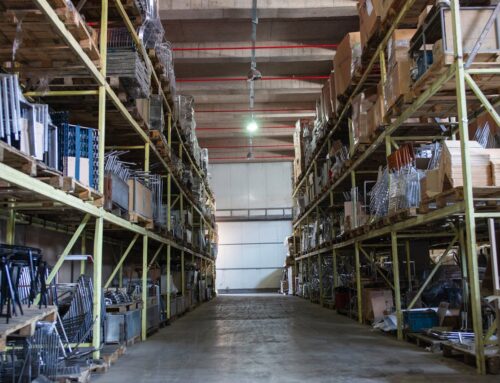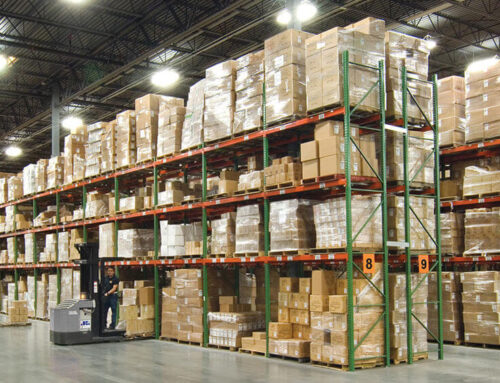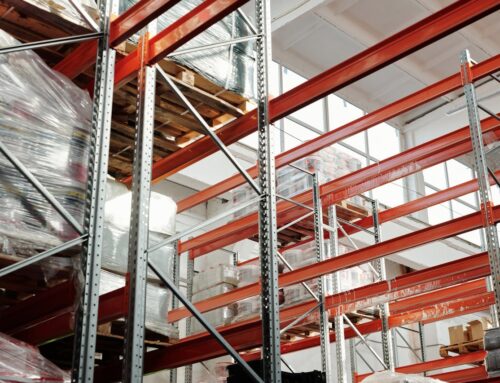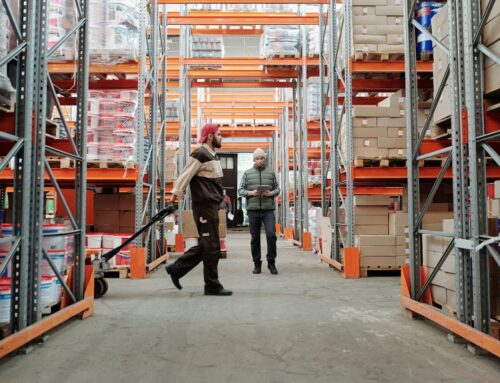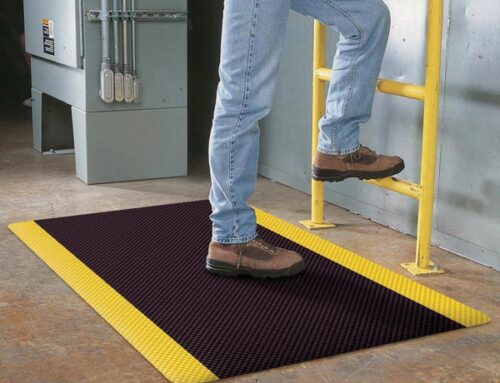In any warehouse, the sight of towering pallet racks stacked with products is a sign of organized productivity. But beneath that structure lies a critical question many warehouse managers overlook: Are pallet racks legally required to be anchored? The answer could determine the safety of your facility, especially if you’re working with used pallet storage racks, installing new systems, or managing warehouse shelving across multiple locations.
This article explores the legal requirements around pallet rack anchoring, particularly through the lens of OSHA standards. We’ll also explain the importance of anchoring from a safety standpoint, how regulations apply to used pallet racks for sale, and how businesses like Pallet Rack World can help ensure compliant pallet rack installation. Whether you’re managing a small warehouse or a high-volume distribution center, understanding these rules could protect your people, your products, and your bottom line.
OSHA’s Position on Pallet Rack Anchoring
Although OSHA doesn’t provide a rule specifically stating that pallet racks must be anchored, it absolutely requires that employers maintain a safe workplace. The foundation for this is OSHA’s General Duty Clause, which mandates that all employers provide a workspace “free from recognized hazards that are causing or are likely to cause death or serious physical harm.” An unanchored rack, especially in high-traffic or seismic zones, clearly falls under this category.
Because OSHA doesn’t always publish granular rules for every warehouse component, it often refers to industry-recognized standards. In the case of pallet racks, OSHA references guidelines established by the Rack Manufacturers Institute (RMI), particularly the ANSI MH16.1 standard. This standard explicitly states that pallet racks must be anchored to the floor to prevent movement, tipping, or collapse.
So, while the law may not spell out every detail, failing to anchor your racks is considered a violation of OSHA’s overarching requirement to maintain safe working conditions. If an incident occurs due to unanchored racks, the employer could be subject to inspections, citations, and potentially large fines.
The Role Anchoring Plays in Warehouse Safety
Pallet racks might look secure because of their sheer size and weight, but without anchoring, they’re surprisingly vulnerable. Accidental impacts from forklifts, uneven loads, or even minor floor vibrations can cause significant shifts in balance. Over time, this movement can lead to instability or even catastrophic collapse.
Anchoring stabilizes the entire racking system at its base, ensuring that loads are evenly distributed and that the rack remains immovable under stress. It is especially important in facilities where heavy equipment operates close to racking systems or in regions prone to seismic activity. According to the Bureau of Labor Statistics, falling objects and structural collapses are among the leading causes of injury in warehouses, many of which could be prevented with proper anchoring practices.
Aside from physical safety, anchored racks contribute to better operational efficiency. Workers can move more confidently and swiftly through aisles, knowing the systems around them are secure. It also protects inventory from damage, reducing replacement costs and downtime.
What About Used Pallet Racks?
One common misconception is that anchoring only applies to newly installed racking systems. That’s not the case. Whether you’re buying new or used pallet racks for sale, the anchoring requirements remain the same. OSHA and RMI do not distinguish between old and new systems when it comes to structural integrity and worker safety.
In fact, anchoring is especially critical when dealing with used pallet storage racks, because older systems may show signs of wear, rust, or misalignment. If a rack has previously been used and then reinstalled without verifying its structural soundness, you’re putting your team and your inventory at risk. Used racks should be thoroughly inspected prior to installation, and anchoring must be done using hardware that is compatible with both the rack and the floor type.
Pallet Rack World emphasizes the importance of evaluating each used rack component carefully and ensuring proper installation methods are followed. Just because a system is pre-owned doesn’t mean it should fall short of current safety standards.
What Proper Pallet Rack Installation Involves
A safe and compliant pallet rack installation begins with understanding your warehouse layout, floor composition, and rack specifications. Once the plan is finalized, the racks must be anchored using industry-approved bolts, usually drilled directly into concrete flooring. Each upright frame should be anchored at its base plate to prevent movement during loading, unloading, or any accidental bumps from forklifts.
It’s also essential that racks are installed level and plumb before anchoring begins. Misalignment not only reduces the system’s load capacity but also increases stress on structural joints and beams, making anchoring less effective. For installations in seismic zones, additional hardware or bracing may be required to meet local building codes and withstand potential earthquakes.
While some warehouse managers may be tempted to handle installation in-house, it’s always safer to work with professionals who understand OSHA standards and can guarantee a compliant setup.
Legal and Financial Risks of Ignoring Anchoring
Ignoring anchoring doesn’t just risk physical harm; it could have serious financial consequences. If an accident occurs and an inspection reveals that racks were not anchored properly, OSHA can issue citations and fines that range from a few thousand dollars to well over $100,000, depending on the severity of the violation.
In addition, insurance carriers may refuse to cover claims resulting from negligence or non-compliance. If employees are injured due to unanchored racks, the business could face legal action, not to mention damage to its reputation and productivity.
In 2018, a warehouse in California was cited after a worker was seriously injured by falling inventory when a rack tipped over during restocking. The investigation revealed the racks weren’t anchored. The resulting OSHA fine and legal costs exceeded six figures, something that could have been prevented with a few well-placed bolts.
How to Stay Compliant and Safe
Staying compliant with OSHA doesn’t end after installation. Racking systems must be routinely inspected for wear, loose anchors, or signs of structural stress. Any signs of instability should be addressed immediately to avoid penalties or injuries.
Warehouse managers should also train staff to report rack damage or shifting and make periodic safety checks part of routine operations. If new racks are added, moved, or replaced, anchoring must be re-evaluated to ensure continued compliance. Documentation is also important. Keeping records of installation details, inspection reports, and repairs demonstrates your commitment to maintaining a safe warehouse environment.
Pallet Rack World encourages all customers to treat anchoring as a long-term safety investment. Whether you’re purchasing new systems or used pallet racks for sale, prioritizing safety and compliance can save you significant time, money, and risk.
Safety Starts at the Base
So, do pallet racks need to be anchored by law? The short answer is yes. While the regulation may not be worded explicitly, OSHA’s standards, supported by RMI guidelines, make it clear that anchoring is a non-negotiable part of safe pallet rack installation. It applies to both new and used pallet storage racks, and it’s essential for any facility where warehouse shelving is in use.
Failing to anchor your racking system puts employees, inventory, and your entire operation at risk. But by investing in proper anchoring, you’re not only staying compliant, you’re also showing your commitment to warehouse safety and professional integrity.
If you’re unsure about your current setup or planning to expand your storage capacity, now is the time to get help from experts. Pallet Rack World can help you choose the right racking systems, ensure proper anchoring, and maintain compliance with the latest OSHA and industry standards.
Contact us today to learn more about our inventory of used pallet storage racks, installation services, and warehouse optimization solutions. Let’s build a safer, smarter warehouse, starting from the ground up.



